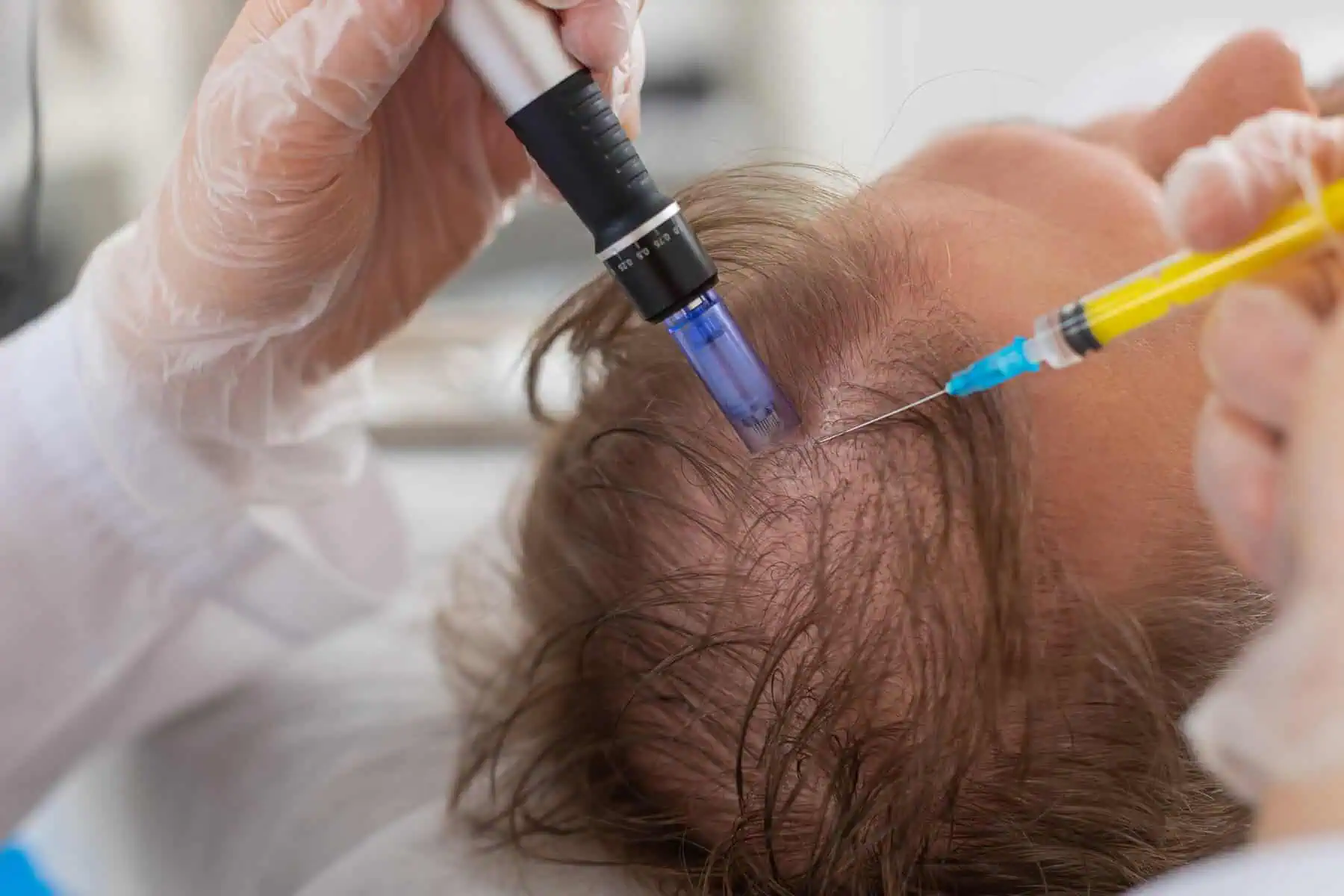Alopecia in New York, NY

Alopecia in New York, NY
Anal Itch, also known as pruritus ani, is a common condition characterized by an intense itching sensation around the anus. This condition can be uncomfortable and distressing, often interfering with daily activities and sleep. The itching can vary in intensity and may be accompanied by redness, irritation, or a burning sensation. Various treatment options are available to manage Anal Itch effectively. A topical medication, such as a cream or an ointment, is often the first line of treatment and provides quick relief. The underlying causes may be addressed through oral medications, while irritated skin can be soothed with bath treatments, including sitz baths. The use of light to reduce inflammation is also called phototherapy. Moisturizers and emollients are frequently recommended to maintain skin hydration and protect against further irritation.
Causes and Variations of Alopecia
Genetic predisposition, autoimmune disorders, hormonal changes, and environmental factors can cause Alopecia. The most prevalent form, Androgenetic Alopecia, also known as male or female pattern baldness, is mainly hereditary and is a common reason individuals seek hair restoration surgery. Another type, Alopecia Areata, is an autoimmune disorder where the immune system attacks hair follicles, leading to patchy hair loss. Other variations include Alopecia Totalis, where complete hair loss occurs on the scalp, and Alopecia Universalis, which involves hair loss across the entire body.
What Are The Different Procedures for Treating Alopecia?
Hair Transplant Surgery
Hair transplant surgery is a leading method for medical hair restoration. During this procedure, healthy hair follicles are transplanted into the areas of the head affected by alopecia from a donor area. The procedure is conducted under local anesthesia and focuses on creating natural-looking results by carefully placing each follicle. Hair restoration surgery is especially effective for those with androgenetic Alopecia and can result in permanent hair restoration.
Hair Plugs
Hair plugs are an earlier technique in hair loss restoration in which small sections of the scalp with hair follicles are transplanted into balding areas. While newer techniques have replaced mainly hair plugs, some individuals may still consider this method for hair augmentation. The procedure is performed under local anesthesia and may require several sessions for the best results.
Scalp Reduction
The process of scalp reduction involves surgically removing balding areas of the scalp and stretching the remaining skin to cover the gap. This method is often combined with other hair restoration procedures, such as hair transplant surgery, to achieve a fuller appearance. Scalp reduction is typically used for individuals with extensive hair loss and can be a practical option when other methods are insufficient.
Over-the-Counter Medications (Rogaine, Nizoral)
Over-the-counter medications like Rogaine (Minoxidil) and Nizoral (Ketoconazole) are noninvasive treatments for Alopecia. Rogaine stimulates hair growth through increased blood flow to the hair follicles, while Nizoral is an antifungal shampoo that can reduce scalp inflammation and promote healthier hair growth. These products are widely accessible and offer a convenient way to address hair loss, although results may vary.
External Laser Comb
An external laser comb is a non-surgical device used for hair loss restoration. It emits low-level laser light to stimulate hair follicles and encourage hair growth. This painless treatment can be done at home and works by enhancing circulation to the scalp and energizing hair follicles, making it a popular choice for those looking for a simple hair restoration method.
Hair-Stimulating Treatments
Hair-stimulating treatments include various therapies designed to encourage hair growth and mitigate the effects of Alopecia. Options such as platelet-rich plasma (PRP) therapy, where growth factor-rich plasma from the patient’s blood is injected into the scalp, and microneedling, which stimulates the scalp to promote hair regeneration, are commonly used. These treatments are often combined with other hair restoration techniques to optimize results.
What Are the Results of Treating Alopecia?
Treating Alopecia can lead to noticeable improvements in hair density, appearance, and overall hair health. Most individuals experience increased confidence and satisfaction with their hair after undergoing hair restoration procedures. While results vary depending on the specific treatment and the extent of hair loss, many find their hair looks fuller and more natural. To explore the best options for your particular needs and to receive expert care, book an appointment at Park Plaza Dermatology in New York, NY.
Benefits of Treating Alopecia
- Increased hair density and improved appearance
- Enhanced self-confidence and self-esteem
- Long-lasting or permanent hair restore
- Reduction in visible bald spots
- Greater styling flexibility
- Improved scalp health and reduced inflammation
- Availability of noninvasive treatment options
- Natural-looking results with advanced hair restoration techniques
- Restoration of a natural hairline
- Personalized treatment plans based on individual needs
Frequently Asked Questions
There is a condition called alopecia that causes hair loss. It is primarily caused by genetic factors, autoimmune responses, hormonal changes, or environmental influences.
Alopecia includes Androgenetic Alopecia (pattern baldness), Alopecia Areata (patchy hair loss), Alopecia Totalis (complete scalp hair loss), and Alopecia Universalis (total body hair loss).
Hair transplant surgery is highly effective for treating androgenetic Alopecia. It offers long-term hair restoration by transplanting healthy follicles to areas affected by hair loss.
Yes, over-the-counter medications like Rogaine can stimulate hair growth, particularly in mild to moderate Alopecia, although individual results may vary.
Scalp reduction is an effective option for extensive hair loss. It is often combined with hair transplant surgery to reduce bald patches and achieve a fuller look.
Alopecia treatment results vary but generally include increased hair density, a more natural-looking hairline, and improved confidence. Book an appointment at Park Plaza Dermatology in New York, NY for tailored treatment options.
